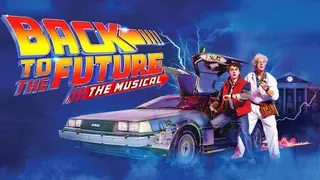November 6, 2013
Dallas Buyers Club
Robert Nesti READ TIME: 6 MIN.
Early in "Dallas Buyers Club," there's a moment when a group of Texan roustabouts hear that Rock Hudson not only has AIDS, but was gay. "Hudson was a cock�sucker! All that Hollywood pussy being wasted!" says one. Yet for most Americans the big shock of the photos of the smiling, emaciated Hudson was the devastation that the disease had wracked on his fabled physique. He became, like or not, the poster boy for a disease that appeared to be in free-fall. In those dark days, an AIDS diagnosis meant a death sentence, usually quickly or through a series of debilitating illnesses.
Today movie audiences may have a similar reaction when they see Matthew McConaughey in Jean-Marc Vall�e's lean, remarkable film. His cheeks gaunt, his ripped body reduced to skin and bones, the actor looks ferociously scary. He lost some 40 pounds to play the role of Ron Woodroof, a Texan electrician, drug addict and cowboy-wannabe who was given a month to live in 1985, and brings his abrasive nature to memorable life. How Woodroof lived for another seven years and helped change the paradigm for the way the illness was being treated is the subject of this film that brings to life the plague years with piercing verisimilitude. The hopelessness and denial are in full-view.
Yet Vall�e, working with screenwriters Craig Borten and Melisa Wallack, tells Woodroof's story as one of courage and hope against all odds. Despite its downbeat nature, this is an inspiring story that shows how one man can change the world. Not that this man is any angel: homophobic, self-absorbed and emotionally volatile, he rejects the medical community's wan treatments; then intuitively explores alternative medications. He buys AZT illegally from a hospital orderly, but when that supply comes to an ends, he heads to Mexico where a de-licensed doctor sets him on a path towards holistic treatments. The catch is that most of these medications have yet to be approved by the FDA, therefore unavailable in the U.S. Undaunted, Woodroof begins to sneak the drugs across the border; then - seeing that he's surviving - decides to share his treatment with others. He comes with the idea of "buyer's club," a place where people with AIDS (PWA) could get alternative meds by becoming a member at a cost of $400.
Still Woodroof is no humanitarian: when a nervous young man gives him $40 for the treatment, Woodroof hands it back and tells him to come back when he has the rest of the money. Behind them stand a line of paying customers spread across the parking lot of the Dallas motel Woodroof uses as an office, all of whom are willing to pay the bounty he puts on his meds. The moment captures what is so special about this film: how it vividly brings back the time when the epidemic appeared to be winning, and people would go to any lengths to live. Throughout the film the alienation and fear that PWA experienced and lived comes strikingly to life. As does this warts-and-all portrait of Woodruff: he can seemingly be as cold as the medical establishment he's up against. Towards the end, he melts some, realizing that what he's done is not only a model for others to follow, but a way to look at treatment that the establishment would embrace and make workable. The sea change in the way we look at AIDS can be traced to men like Woodroof, whose ornery nature was likely the reason he succeeded.
Vall�e's no-nonsense style recalls that of Steven Soderbergh - in some ways, Woodroof is an advocate like Erin Brockovich and the film an expression of one person-against-the system. Despite its weighty emotional subtext, the film is devoid of sentiment. Only towards the end does it creep in; and then it is welcome. There's only one way this story can end, but it does so with a sense of scruffy nobility. Perhaps Woodroof's story is a bit simple in its moral dynamic, yet it has heart and staying power. What Vall�e achieves is to recreate a moment - one of great fear, but also one that underscores how change can occur in the direst of circumstances.
The screenwriters' dialectic pits Woodroof against the medical establishment, which is seen as smug and stuck in drug protocols that are ineffectual against the enormity of the crisis at hand. It is likely not fair, but gives the film a dynamic that works dramatically -- and not that it wasn't true: many that lived through the crisis recall how frustrating it felt to see how drug companies appeared callous with testing and greedy in pricing AZT, the first drug that worked against the virus. This establishment is personified in an emotionally cool doctor (Denis O'Hare), whose biggest flaw is that he's missing the point: the crisis calls for extraordinary measures, not the routine process he follows in tandem with big pharma. Balancing this is a doctor played by Jennifer Garner, who sees the frustration of her patients and becomes an advocate for Woodroof. It is something of a thankless role, but Garner makes the most of it, bringing a much-needed compassion to the stark story.
Central to the film's success are the performances of McConaughey and Jared Leto. McConaughey is all angles; rough, hard-eged, ferocious. Those who have long thought of the actor as pretty boy rom com lead will be shocked by the depth of feeling he brings here. Those, though, that have been following his career over the past few years (in such films as "Killer Joe," "Magic Mike" and this year's "Mud"), know what he's capable of. But the combination of his physical transformation and fierce determination make for a breathtaking turn. It is the type of performance that brings award recognition or (at least) one that puts his aging surfer boy image in the recycle bin.
McConaughey's central relationship is an unlikely alliance he makes with a street-wise trans woman, Rayon (Leto). Leto hides a soft heart under a tough exterior, giving a performance of such naturalism that it is difficult not to be moved. The bond the two form is unusual, but believable, and drives the film to its inevitable, if touching conclusion. That this is not mawkish is tribute enough to the artists involved.
Robert Nesti can be reached at [email protected].






